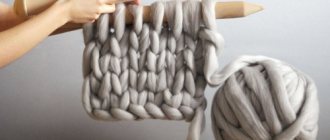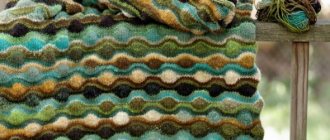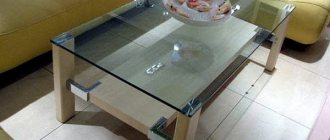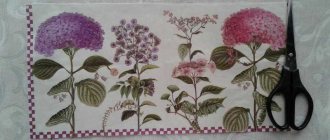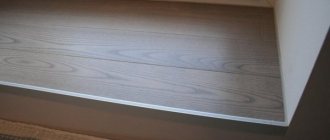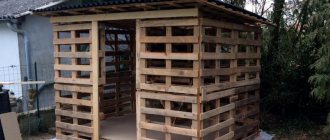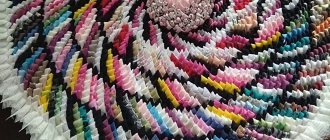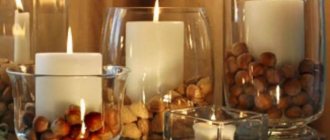Fabric selection
The many types of fabrics make choosing a little difficult. Therefore, before sewing, it is better to understand their differences and features. Depending on your preference, you can choose a smooth fabric or prefer a patterned version with a pattern. An important role is played by the color and raw materials used in production.
Currently, the buyer has the opportunity to choose from the following types:
- Organza holds its shape well. The fabric is light and transparent. The base is polyester. The more expensive model contains viscose or silk. Insufficient air permeability;
- The “mesh” has good light transmission. It is dense with large holes. Synthetics. An excellent option for the kitchen;
- Thin, lightweight threads of muslin wash well, dry quickly and provide free passage for air. Made from natural fibers of wool, linen or cotton;
- The most popular type is the veil. Cotton, linen or wool threads provide lightness and the desired shape. For the hall this is the best option. This type is not recommended in the kitchen because it fades quickly and collects dust and dirt well;
- Subtlety and weightlessness are characteristic of “gas”. The base is silk. In rare cases - synthetics.
You can make tulle from any type according to your taste. You just need to use the sewing recommendations correctly.
Options for Beginners
For housewives who have no experience in sewing curtains, it is recommended to start experimenting with products for small rooms. The ideal option is to sew tulle for the kitchen with your own hands. In your work you can make bold decisions and use various technologies.
For the kitchen window you can make:
- A short product that can be placed above the window or in the middle of the window on special holders;
- The product is 5-10 cm higher or lower than the window sill;
- Tulle to the floor (a few centimeters above the floor).
Each of the presented options can have a different cut, consist of one or several canvases, and be decorated with original elements. Arch-shaped tulles of various lengths with openwork or satin ribbons, flowers and other small items are popular in the kitchen.
Experts recommend choosing a practical fabric for the kitchen that does not fade, washes well and keeps its shape. These are predominantly synthetic fabrics or mixed fibers with a large percentage of synthetics. It is also worth noting that bright blue or orange colors fade much faster than pastel shades of yellow, brown or green.
How to take measurements
To sew tulle, calculate the amount of fabric yourself. This is carried out in 3 stages:
- The first is to determine the length. If the torus should not touch the floor, then the indentation should be 1-2 cm. The curtain will lie in a beautiful train when 5 to 10 centimeters are added. An option up to the windowsill or slightly lower may be considered. The method of fastening is determined. If there are eyelets, then an additional 10 to 20 cm is added for the spacer tape;
- The second stage is to determine the width, which consists of allowances (2 on both sides), the width of the cornice and gathers (2-4);
- The third stage is calculating the length. When the curtains are separate, the patterned tulle will require adding two lengths of patterned step. In this case, symmetry will be maintained.
Curtain models
For children's apartments, it is worth choosing a curtain fabric in light colors. The perfect option is a one-color curtain decorated with images of characters. The multifunctional color of tulle is white, but you can also choose a shade of beige or cream.
Choose the style to suit your taste. Use applique, decorate with beads, add a fancy lambrequin. If the room is for a girl, then feel free to use ruffles and bows. If this is a boy’s room, then abstract figures, cosmic bodies, and images of cars are more appropriate. By decorating the curtain with appliqués from cartoon series, any child will be delighted with the room.
A wonderful place where all the guests in the house gather must be perfect. Light, transparent fabrics are suitable for such a room. Straight curtains look great in their natural form, in warm colors. It doesn’t have to be an ordinary hanging fabric; it can be decorated with tasteful accessories.
Sewing elegant tulle for the living room is just as easy. The matter of improving curtains in a room of this kind must be treated with attention. The room should look luxurious and elegant. That is why it is necessary to decorate the curtains yourself so as not to go overboard with accessories.
You can use crystals, tassels or picturesque pendants to decorate plain curtains. Graceful flowers, made independently from a smooth ribbon or from pieces of leftover tulle fabric, are suitable as an element for drapery.
Decorated pendants will be molded favorably, giving a special ambiance. Don't be afraid to create your own individual style, highlighting your uniqueness.
Processing the top bar
An important part of the job. This is done very carefully so that the curtain subsequently holds well and does not fall. A special white ribbon is used, on which there are loops on a dense material.
Subsequence:
- the top of the curtain is hemmed;
- The tape is basted from the edge at a distance of 0.5 mm. Its edges should be 2 cm from the ends of the curtain. There should be no tension or folds;
- line on a typewriter. The number of lines is equal to the number of cords;
- edges are sewn on the side;
- the curtain is pulled to the required size.
Stylish component
When the technology for sewing curtains is determined and the fabric is selected, the question of aesthetics arises. Everyone wants home to be a place where it is always cozy and comfortable. It is textiles, in particular curtains, that add coziness to any room. So which ones should you choose?
If the interior is saturated with bright colors, you should pay attention to colored curtains that will complement the existing design. You can take a color that is already present in the interior, but choose a softer and more pastel shade. Remember that any shades differ in warmth, and a cooler shade of a color already present in the interior will look inharmonious. When choosing colored tulle and bright curtains, you need to focus on filling the room with light. In a bright room, colored tulle looks vibrant and bright, but if there is little sun, it will seem heavy and dark.
You may also be interested in: How to sew curtain tape at the bottom and top
The most classic option in the style of minimalism is white organza fabric. You can choose curtains of any color to match it. But don’t think that choosing white organza is easy. It can also be cool white, ivory or pearlescent. Each shade will look different and suit completely different interiors. You should not try to combine several shades of white; this task is extremely difficult, and not even every professional designer will be able to choose the combination correctly.
Whatever fabric you choose, whatever color and style you choose, now you can sew tulle with your own hands.
Save
Curtains in the kitchen
The presence of tulle in the kitchen transforms the interior. A little sewing skill is enough to decorate a window opening in a stylish and beautiful way.
You can use all kinds of recommendations posted on the Internet in order to make your kitchen design unique. Curtains can be of any shade, shape and texture. The main thing is that they do not interfere with work and are easy to wash.
Pattern
You can sew a kitchen curtain with high quality if you first make a pattern - a reflection of the components of the future curtain on paper.
To obtain a more accurate copy, lay out the pattern on a flat surface, preferably on the floor or table. This is important for rounded or pointed tulle parts. Symmetrical sides and elements should be cut out on a corresponding sheet of paper folded in half in half size.
After drawing up a life-size diagram of the curtain on paper, it is cut out. When drawing up a pattern, seam allowances are not provided, but allowances may be included for the curtain to hang freely.
The pattern is copied onto the fabric carefully, avoiding displacement. To copy symmetrical areas, the fabric is folded in half with the right side inward. This is where allowances for seams and facings are marked (if necessary).
When choosing a model of two halves, you must not forget that, in the case of using fabric with a pattern, select the symmetry of the pattern on the adjacent halves. In this case, you can sew the curtains correctly by slightly moving one half relative to the other.
Parts of curtains that are intended to hang freely, slightly wavy, must be cut from fabric placed on the bias. Elements for facing rounded edges are cut out in the same way. In this case, simple hemming cannot ensure smooth lines and rounding.
Required tools and materials
Includes both auxiliary and basic materials. To sew tulle or curtains use:
- A sewing machine is equipment that can be used to sew products and make even and clean seams.
- Presser feet for a sewing machine , they come in different types; they are needed for curtains: for finishing edges and for main seams.
- Pins - safety pins or tailor's pins - are needed for basting and hemming the material.
- Sharp scissors , use tailor's scissors, but if you don't have them at hand, use sharp ones;
- The iron is the main equipment, as it is needed for the stage when working with the product. First of all, they are processed, ironed and steamed, and at the end of the work, they are also ironed well.
- Needles and threads for basting and sewing seams , it is better to baste by hand and then sew on a machine.
- Graph paper or tracing paper.
- Pen, felt-tip pen, pencil or chalk.
- A flap will help you choose fabric and needles for your sewing machine.
- Curtain tape , it is needed to attach the product to the cornice, otherwise called braid.
Short tulle curtains for the kitchen: patterns, master class with photos
Short curtains not only protect the kitchen from sunlight, but also give the housewife less trouble with maintenance. They are less fire hazardous and do not interfere with the cooking process. Similar models are needed:
- for small spaces, because a tulle curtain adds lightness and increases the volume of the kitchen.
- does not interfere with free access to the window sill, even in the closed position.
- Suitable for windows with a door to the balcony.
If we talk about short curtains, there is no consensus on what exactly the length should be: reach the middle of the window, window sill, or a short lambrequin up to 50 cm wide.
curtains with drawstring
This model is tightened diagonally with curtain tape and assembled on one side of the window.
arched curtain for kitchen
curtains for the kitchen with eyelets: master class with photos
The tulle curtain is attached to eyelets, creating beautiful wavy folds.
To sew it you need:
- the size of the tulle is equal to the width of the cornice multiplied by 2.5;
- finishing cuff fabric (width 25 cm);
- grommet tape;
- eyelets 8 pcs.
An approximate table of the number of hinges for a certain window width, as well as the approximate distance between the fasteners.
Detailed pattern
First, cut the tulle according to the pattern. To remove excess, just pull out the thread and cut along it. The side sections are closed. In the middle of the finishing cuff, chalk strokes are drawn along which the tape is laid. Using an ironing iron, glue it to the cuff, bend it and iron it again. In the middle, measure the seam allowance, which is also fixed with an iron.
Using a machine, sew along the edges of the cuff, except for the bottom, and turn it inside out on the face. The resulting part is ironed.
Tulle is placed in the cuff, sewn and ironed. From the top edge of the cuff, leaving 4 cm, mark points for eyelets. Attach the fasteners and trace their outline. Cut along the border of the eyelet, leaving 2 mm more fabric.
One part of the eyelet is placed under the bottom and snapped on top. The curtain is ready, you can attach it to the cornice.
Difficulties in cutting yourself
The self-cutting master class is conducted without basic knowledge, since there are not many difficulties.
- When placing the pattern, pin it in place so that the fabric does not move.
- Soap is not visible on all fabrics; they are used to trace the pattern, so washable felt-tip pens or chalk are used.
- They forget about allowances; they are needed so that the length of the product does not shorten.
- Use tracing paper; it is better to pin it to the material.
- Before cutting the main one, it is better to make a sketch on unnecessary fabric to make sure that you sew everything correctly.
